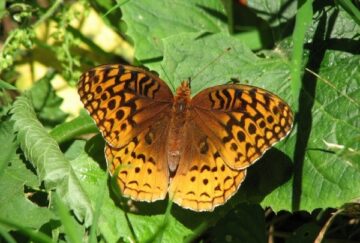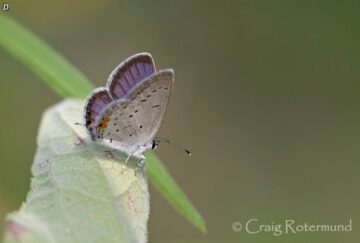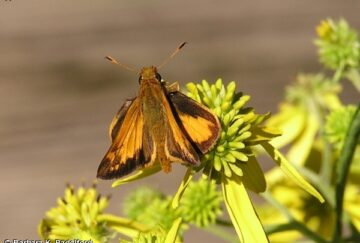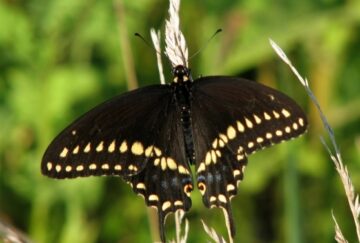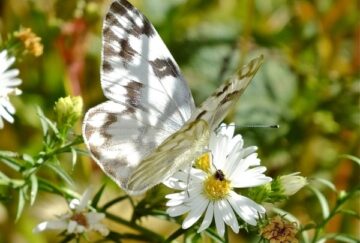Butterflies
Butterflies are generally described according to the color and markings of the upper and lower surfaces of their wings. In the descriptions on the species pages, the top surface of the wing is referred to as “dorsal” and the lower surface is referred to as “ventral.”
Butterflies and moths make up the order Lepidoptera. There are about 725 species of butterflies in North America. Lepidoptera differ from all other insects in having scales over most of their wings. Butterflies and moths are separated from each other by wing venation, body structure and habits. Butterflies fly during the day, while most moths are active at night. Butterflies usually hold their wings vertically over the back, while moths fold the wings over the back or wrap them around the body. All butterflies have clubs at the tips of the antennae, while moths lack antennal clubs. A butterfly has 3 main body segments – the head, thorax and abdomen – as well as 4 wings. Myriad overlapping scales give the wings their color and patterns. Among the scales are sex scales that produce scent pheromones which attract mates. Butterflies have chemoreceptors at the end of the antennae and on the bottoms of their feet.
The life cycle of a butterfly is called complete metamorphosis. After mating, the female lays an egg that hatches into a caterpillar. The caterpillar spends its life feeding on plant material. As it grows it sheds its skin and becomes a new, larger instar. The last molt produces a chrysalis or pupa where the caterpillar develops into an adult. When the adult is fully formed, the chrysalis splits open and the adult crawls out and pumps fluids into the wings. As soon as the adult is able to fly, courtship begins. The average lifespan of a butterfly is 2 weeks, but can be as short as a week or longer than 9 months, depending on the species.
Disclaimer: The content of NatureSearch is provided by dedicated volunteer Naturalists of Fontenelle Forest who strive to provide the most accurate information available. Contributors of the images retain their copyrights. The point of contact for this page is: Babs Padelford.

